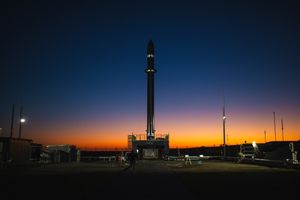
The global commodity landscape leading up to September 25, 2025, presents a complex picture of significant price surges in key sectors, driven primarily by escalating geopolitical tensions, persistent climate-related supply disruptions, and robust demand for critical materials. While the International Monetary Fund's Global Price Index of All Commodities reflected an overall upward pressure in the first quarter of 2025, continuing a trend from late 2024, the market has witnessed divergent movements across various goods. This commodity price volatility carries immediate and far-reaching implications for the global economy, translating into higher costs for consumers and increased input costs for businesses, thereby exacerbating inflationary trends and posing challenges for central banks.
A Nuanced Picture: Gold Shines, Oil Softens, and Agriculture Volatile
The period from late 2024 to September 2025 has been characterized by a nuanced performance across the commodity spectrum, rather than a uniform surge or decline. Gold, certain agricultural products like coffee, and natural gas have seen notable increases, while overall oil prices and some industrial metals have experienced declines or stabilization.
Gold emerged as a standout performer, experiencing strong bullish momentum that saw prices surge to fresh all-time highs above US$3,600 per ounce in early September 2025. This rally was underpinned by rising expectations of Federal Reserve interest rate cuts, declining real yields, a weakening US dollar, increasing peacetime debt loads in Western countries, and robust demand from central banks looking to diversify reserves away from the US dollar (wIth China being a significant buyer). Silver mirrored this trend, breaking 13-year highs in Q2 2025, with platinum also nearing 10-year highs.
In the energy markets, crude oil prices (Brent, WTI) saw some increases in late 2024, influenced by ongoing geopolitical conflicts like the Russia-Ukraine war and flare-ups in the Middle East, which heightened supply fears and disrupted critical maritime trade routes. However, forecasts for 2025 generally anticipated downward pressure due to a projected oversupply, with OPEC+ decisions to delay output increases aiming to balance the market. Natural gas prices displayed significant volatility, experiencing a substantial seasonal rally in Q4 2024 and anticipated to surge by 55% in 2025, driven by sustained global demand and rising export levels, particularly from US LNG to Europe.
Industrial metals presented a mixed bag. Copper was a strong performer, leading industrial metals with an 8% increase in 2025 (as of Q2), boosted by increasing use in global energy transition technologies (such as electric vehicles and data centers) and strategic stockpiling. Nickel, however, continued its downward trend observed since 2022 due to persistent oversupply, notably from Indonesia. Iron ore prices, after a rebound in late 2024 following Chinese government stimulus, saw an almost 2% increase in August 2025 but were expected to ease later in the year due to additional supply.
Agricultural commodities faced diverse pressures. Grains (corn, soybeans, wheat) generally trended lower through most of 2024 and into 2025 due to improved crop yields and falling fertilizer and fuel prices. Conversely, softs like coffee surged by 70.8% and sugar by 29.9% in the year ending late 2024, primarily due to extreme El Niño-induced weather constraining supply in tropical growing regions like Brazil and Vietnam, coupled with strong demand. Livestock, particularly cattle, experienced a spike and were expected to remain at record highs in 2025 due to reduced herds.
Winners and Losers in a Volatile Market
The divergent commodity price trends have created distinct winners and losers among public companies across various sectors.
Gold Miners Triumph: Companies like Barrick Mining (NYSE: GOLD, TSX: ABX), Agnico Eagle (TSX: AEM, NYSE: AEM), Newmont (NYSE: NEM, TSX: NGM), and Kinross Gold (TSX: K, NYSE: KGC) have significantly benefited from the surge in gold prices. Their revenues and profit margins have expanded, with some gold miners' indexes up over 50% year-to-date in 2025, outstripping gold's own gains. Lower oil prices, a significant component of mining costs, further enhanced their profitability.
Coffee Retailers Face Headwinds: On the losing side, coffee roasters and retailers, who purchase coffee beans as a raw material, are seeing significantly increased input costs. Companies like Starbucks (NASDAQ: SBUX), Keurig Dr Pepper (NASDAQ: KDP), Nestlé S.A. (OTC: NSRGY), and The J.M. Smucker Co. (NYSE: SJM) face squeezed profit margins. While they may attempt to pass these costs to consumers, it could impact demand and sales volumes.
Natural Gas Producers Gain: The surge in natural gas prices is a boon for exploration and production (E&P) companies such as Antero Resources (NYSE: AR), Coterra Energy (NYSE: CTRA), Gulfport Energy (NASDAQ: GPOR), and EQT Corporation (NYSE: EQT). These companies benefit from increased revenues and improved profitability. Cheniere Energy (NYSE: LNG), as the largest US LNG exporter, also benefits from strong global demand. Conversely, natural gas utility companies and energy-intensive industries that rely heavily on natural gas as an input face increased operating costs.
Oil Refiners and Airlines Benefit from Softer Crude: With overall crude oil prices facing downward pressure, oil refining companies like Marathon Petroleum Corp (NYSE: MPC), Valero Energy (NYSE: VLO), and Phillips 66 (NYSE: PSX) are seeing improved profit margins as crude is their primary raw material. Similarly, airlines such as Delta Air Lines (NYSE: DAL), Southwest Airlines (NYSE: LUV), and American Airlines Group (NASDAQ: AAL) benefit from reduced jet fuel costs, a major operating expense, leading to improved profitability. Conversely, upstream oil E&P companies like Exxon Mobil (NYSE: XOM), Chevron (NYSE: CVX), and Occidental Petroleum (NYSE: OXY) face headwinds from lower crude prices impacting their revenues and the value of their reserves.
Industrial Metal Consumers See Relief, Miners Feel Pressure: Companies in the automotive and manufacturing sectors, such as General Motors (NYSE: GM), Ford Motor Company (NYSE: F), and Tesla (NASDAQ: TSLA), benefit from stabilizing or declining prices for industrial metals like steel, aluminum, and certain battery metals, which are crucial raw materials. This reduces their input costs and can improve profit margins. On the other hand, industrial metals mining companies like BHP Group (NYSE: BHP), Rio Tinto (NYSE: RIO), Glencore (LSE: GLEN), and Vale S.A. (NYSE: VALE) experience a direct negative impact on their revenues and profitability from declining commodity prices.
Broader Significance: Geopolitics, Energy Transition, and Monetary Policy
The mixed commodity price trends from late 2024 to September 2025 are deeply intertwined with broader industry patterns, geopolitical shifts, and evolving policy landscapes.
The overarching theme for this period is a global economic slowdown, influencing demand for essential resources. While the World Bank anticipates an overall decline in commodity prices for 2025 and 2026, this aggregate view masks the significant variations. Geopolitical tensions, particularly the ongoing Russia-Ukraine conflict and flare-ups in the Middle East, continue to disrupt energy and agricultural supplies, sustaining inflationary pressures and raising concerns over global food security. Trade policies and potential tariffs (e.g., U.S. import tariffs) also create uncertainty and price volatility.
A critical long-term driver is the accelerating global energy transition. This shift fundamentally changes energy systems from fuel-intensive to materials-intensive, significantly increasing demand for critical metals and minerals needed for renewable energy infrastructure and electric vehicles. Demand for raw materials like copper, lithium, nickel, cobalt, and silver is expected to surge, potentially creating a "green supercycle" for these commodities. This trend makes these minerals strategic assets, shaping trade and investment policies and differentiating the current period from past commodity cycles.
Central banks, including the U.S. Federal Reserve, are actively making monetary policy adjustments, such as interest rate cuts, to stimulate growth and manage inflation. Lower interest rates can decrease the opportunity cost of holding non-yielding assets like gold, stimulating investment demand. Commodity prices are expected to put downward pressure on global inflation over the next two years, although persistent inflation in certain sectors and fiscal constraints in many nations limit the scope of interventions. Historically, commodity markets have experienced cycles of booms and busts, influenced by macroeconomic shocks and supply chain bottlenecks, with the current period sharing similarities in terms of geopolitical uncertainty and the influence of global economic growth.
What Comes Next: A Complex Horizon
The outlook for global commodity markets beyond September 2025 remains complex, with a blend of short-term price adjustments and significant long-term structural shifts.
In the short-term (late 2025 - 2026), a general softening of overall commodity prices is anticipated, primarily due to slower global economic growth and an oversupply of oil. Brent crude prices are forecast to average $64 per barrel in 2025 and $60 in 2026. However, natural gas prices are expected to be mixed, with a significant expansion of LNG capacity potentially leading to price drops by late 2026 or early 2027. Agricultural commodities are projected to fall by 7% in 2025, though localized climate events will continue to drive volatility in soft commodities. Precious metals, particularly gold, are anticipated to remain elevated or reach new records in 2025 before stabilizing in 2026, driven by geopolitical tensions and safe-haven demand.
The long-term outlook (2027 and beyond) is dominated by the accelerating global energy transition. This will create a "new supercycle" for commodities, with massive demand for critical metals like copper, lithium, nickel, and cobalt. While demand for fossil fuels may decline, the demand for these "green" metals will rise sharply, potentially leading to supply shortages and sustained price appreciation. Food security will remain a concern due to climate change, leading to continued volatility in agricultural markets. Geopolitical influence and supply chain restructuring will encourage diversification of sourcing strategies and localization efforts.
Strategic pivots for market participants include diversifying sourcing, investing in green technologies and materials, implementing advanced risk management, and embracing digital transformation. Market opportunities lie in energy transition metals, environmental markets, and technological advancements, while challenges include persistent volatility, potential supply shortages for critical minerals, and ongoing geopolitical risks. Potential scenarios range from a "Green Supercycle" with sustained high demand for transition metals to an "Economic Headwind & Oversupply" scenario with broad-based commodity price declines.
Wrap-Up: Navigating a Nuanced and Volatile Market
The global commodity markets from late 2024 to September 2025 have reinforced the reality of intense volatility and divergence, rather than a uniform surge. Key takeaways include the robust performance of precious metals driven by safe-haven demand and monetary policy expectations, the mixed and often volatile trends in energy markets influenced by geopolitics and supply dynamics, the strong demand for "green" industrial metals like copper, and the climate-driven surges in certain agricultural commodities like coffee.
Moving forward from September 2025, the market assessment suggests continued volatility. Gold's bullish momentum is widely expected to persist, while crude oil faces downward pressure from oversupply, despite geopolitical risks. Copper is seen entering a structural deficit, potentially driving prices higher, while agricultural markets will be heavily influenced by weather patterns and the fading of El Niño.
The lasting impact of this period includes intensified volatility, persistent geopolitical fragmentation and supply risks, and the powerful, long-term structural shift driven by the energy transition, which will fundamentally reshape demand for specific commodities. China's evolving economic health remains a critical determinant for industrial metals.
Investors should closely watch monetary policy decisions by major central banks, global economic data (especially from China), and geopolitical flashpoints. Commodity-specific supply dynamics, such as OPEC+ production decisions, weather patterns, and mining output, will be crucial. Furthermore, the strength of the US dollar, global inflation figures, inventory levels, and progress in the energy transition will be key indicators for navigating the nuanced and rapidly evolving commodity landscape in the coming months.
This content is intended for informational purposes only and is not financial advice.




